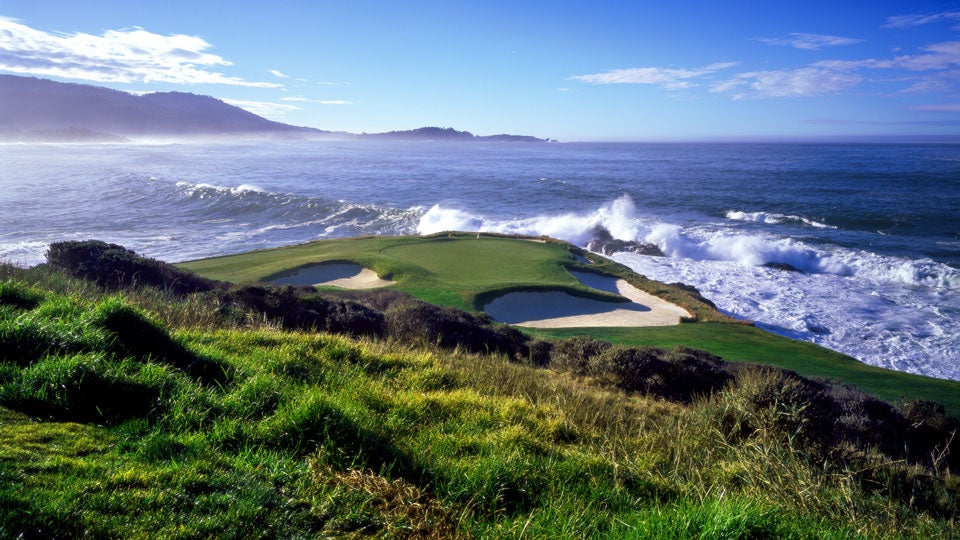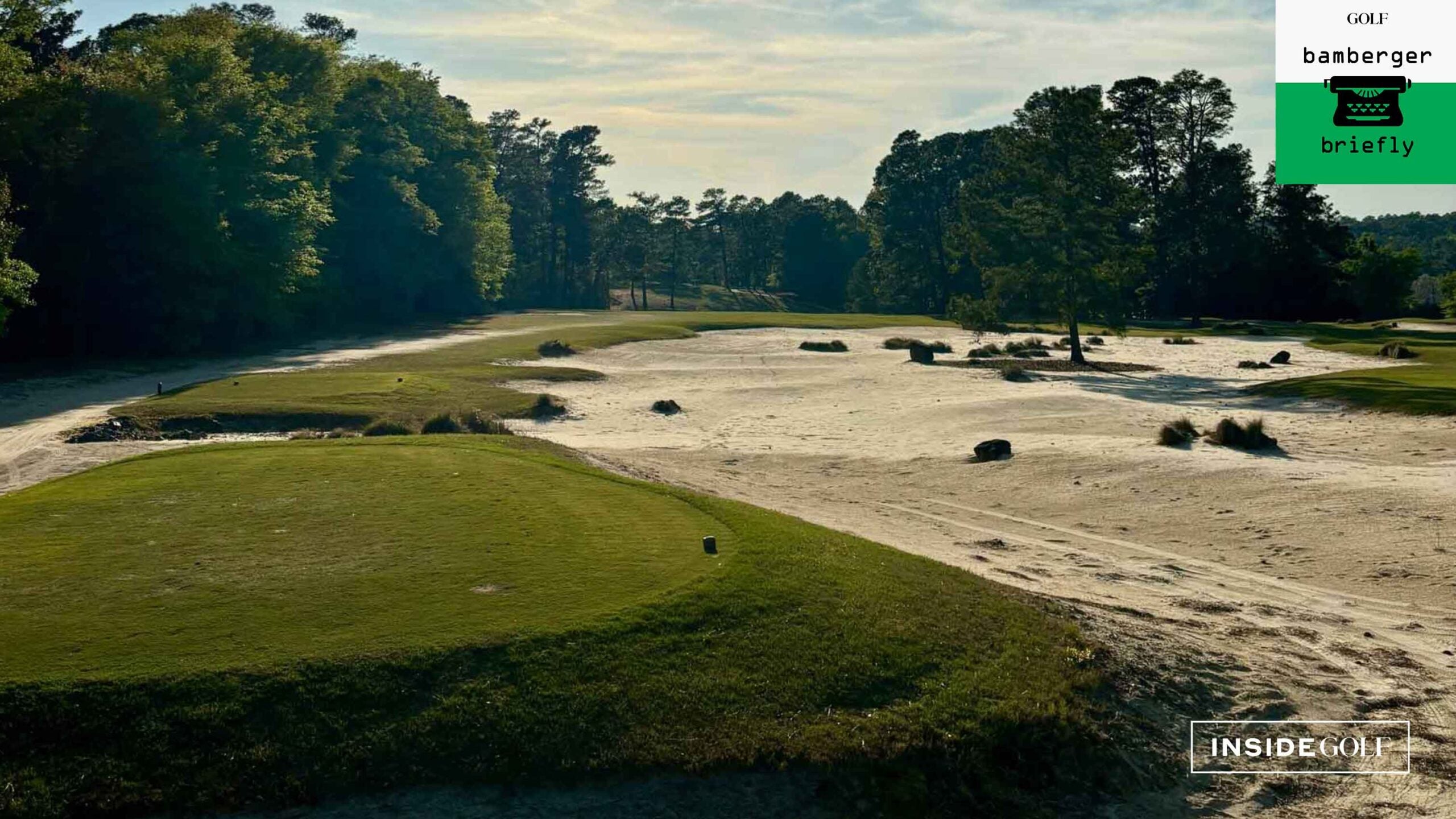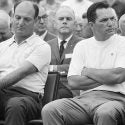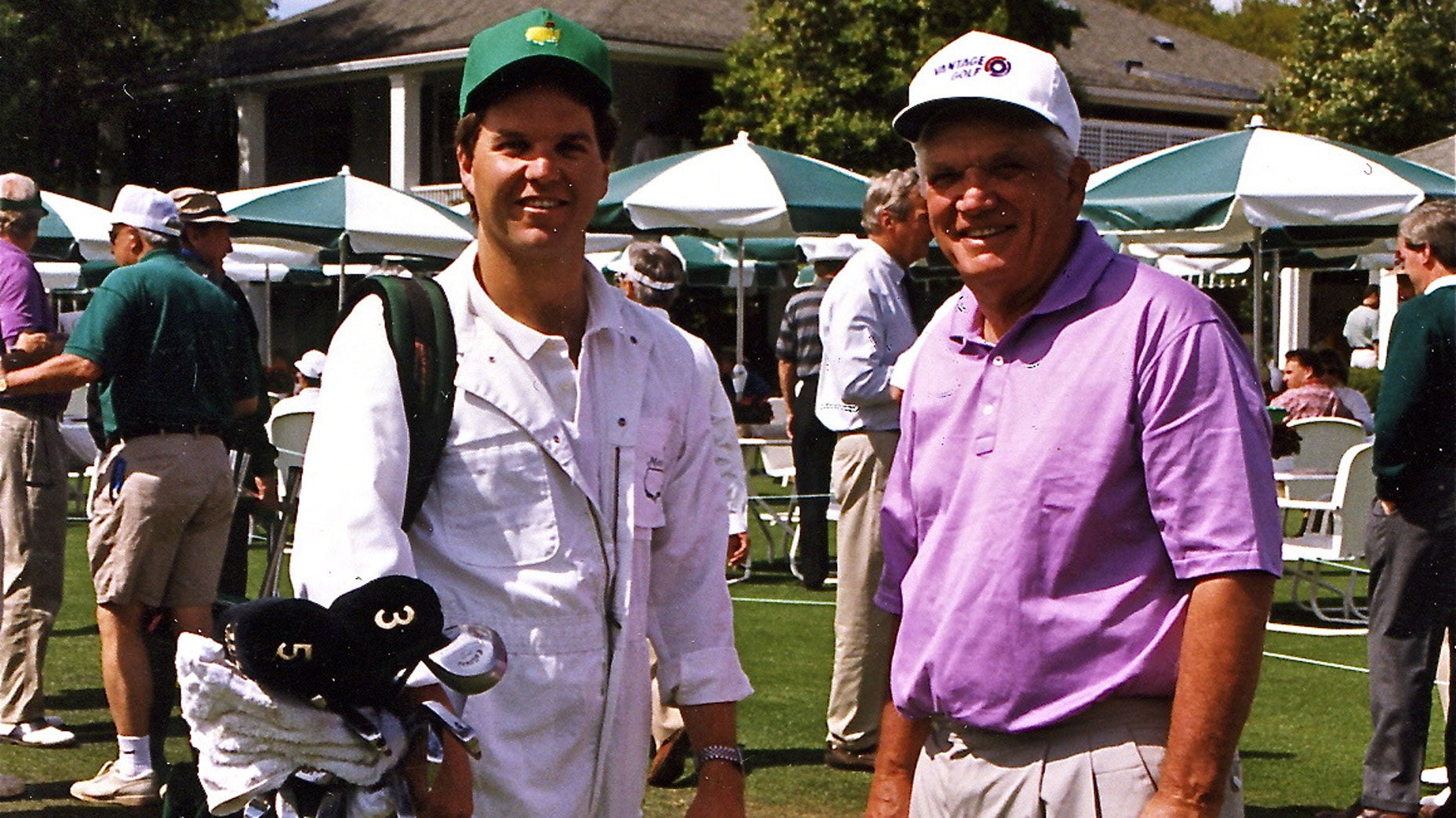Every U.S. Open course dishes out a rugged test, but unquestionably, some brutalize the players more than others. Surprisingly, Shinnecock Hills, Pinehurst No. 2 and Bethpage Black did not make our list of the hardest layouts. So which courses did? Here are the 18 toughest U.S. Open courses (since World War II), as determined by the four-round aggregate scoring average at each course, in relation to par.
18. St. Louis Country Club, St. Louis, Mo. (1947)
Scoring average: 75.88; par 71, +4.88
In truth, St. Louis Country Club wasn’t such a terror. It was short, at 6,532 yards, and yielded plenty of red numbers, including the lowest round in U.S. Open history, a 30-35—65 by amateur James McHale Jr. Yet, the average scores soared because it was still a U.S. Open setup, with narrow fairways, thick rough and firm, fast greens and frankly, the depth of the field in terms of quality players in 1947 was nothing close to what it would be a generation in the future.

17. Cherry Hills Country Club, Denver, Colo. (1978)
Scoring average: 75.92; par 71, +4.92
No one was going to drive the par-4 first green in this U.S. Open the way Arnold Palmer did in 1960; Palmer’s design company was called in to lengthen the hole by 53 yards and to toughen up the rest of the track as well. The result was Andy North as champion, at one-over-par 285. He didn’t exactly conquer the mile-high elevation, tilted greens and watery challenge down the stretch, but he handled it better than anybody else.

16. Medinah Country Club (No. 3), Medinah, Ill. (1949)
Scoring average: 76.37; par 71, +5.37
Once described as “a claustrophobia of woods,” Medinah also served up severe doglegs and two long, all-or-nothing, forced-carry par-3s that played over Lake Kadijah, in addition to the tree trouble. Dr. Cary Middlecoff’s winning score of two-over-par 286 in 1949 was actually lower than what Lou Graham shot to win in 1975, when the scoring average was nearly as high, at 75.31.

15. Oakmont Country Club, Oakmont, Pa. (2007)
Scoring average: 75.42; par 70, +5.42
The hardest U.S. Open course of the past 10 years—and the last 40 years—is brutal old Oakmont, a course that, as Gene Sarazen once put it, “possesses all the charm of a sock to the head.” The fastest greens in major championship golf, more than 200 bunkers, heavy rough and diabolically placed ditches led to Angel Cabrera’s winning total of five-over 285 in 2007. Still, that was a cakewalk compared to the U.S. Opens of 1927 and 1935, when 301 and 299 were the winning scores, respectively.

14. Atlanta Athletic Club (Highlands), Duluth, Ga. (1976)
Scoring average: 75.47; par 70, +5.47
The first U.S. Open ever played in the southeast predictably faced typical Southern high heat and humidity, as well as club-twisting Bermuda rough. Only one player beat par in the first round (Mike Reid’s 67), amid much complaining that the fairway grass was too high. Indeed, a mistake on new mowers had left the grass cut to 3/4 of an inch instead of 1/2 an inch. Jerry Pate mastered the fractions, winning by two with a three-under 277 score.

13. Congressional Country Club, Bethesda, Md. (1964)
Scoring average: 75.70; par 70, +5.70
Sheer length–at 7,053 yards, Congressional was the longest U.S. Open course in history–and in particular, the long par-4s were the root of the trouble. Two of the par-4s were converted from par-5s. Some had trouble reaching them in two, others would find greens that wouldn’t hold their lengthy, low-trajectory approaches. Exceedingly grainy greens and high heat on the 36-hole windup–that nearly overcame eventual winner Ken Venturi–contributed to the lack of red numbers.

12. Pebble Beach Golf Links, Pebble Beach, Calif. (1972)
Scoring average: 77.79; par 72, +5.79
The third-highest scoring average since World War II resulted from seaside greens that turned crusty, shaved to a will-they-survive-the-week 3/32 of an inch. Every putt was a treacherous task. Then, as the leaders teed off in round 4, fierce gusts of up to 35 mph gusted off the Pacific, bringing on small craft warnings. The survivor was Jack Nicklaus, whose 290 total staked him to a three-shot win.

11. Inverness Club, Toledo, Ohio (1957)
Scoring average: 76.17; par 70, +6.17
An apocalyptic thunderstorm greeted players in the first round, while the double Saturday rounds (three and four) were contested in oppressive humidity and temperatures in the high 90s. In between, the beguiling Donald Ross-crafted greens and gnarled rough posed innumerable problems for the field. Dick Mayer blasted Cary Middlecoff in a playoff, 72-79, after both had notched two-over-par 282 totals.

10. Merion Golf Club (East), Ardmore, Pa. (1950)
Scoring average: 76.27; par 70, +6.27
The shortest of America’s great courses, Merion protected herself with skinny fairways, tiny, brick-hard greens and a veil of heavy rough. Ben Hogan, a little more than one year removed from a near-fatal car crash, posted seven-over-par 287 to make a playoff with Lloyd Mangrum and George Fazio. As with every truly great course, however, Merion would yield a low score to superb play and it did this week. Hogan won the playoff with a 69.

9. Oak Hill Country Club (East), Rochester, N.Y. (1956)
Scoring average: 76.28; par 70, +6.28
Ring a set of severely contoured Donald Ross greens with punishing rough and pair that with a collection of stout par-4s, including one of golf’s hardest trio of closing holes and you have a recipe for ugly numbers. No one, not even the winner, Cary Middlecoff, could match par or better for 72 holes. Only one player in the top six finishers, Julius Boros, played the final three holes in anything better than 4-over-par total for the week.

8. Bellerive Country Club, St. Louis, Mo. (1965)
Scoring average: 76.30; par 70, +6.30
A somewhat immature (five years old), super-sized (7,191 yards) layout greeted Open contestants in 1965. Its Robert Trent Jones Sr.-designed greens were gigantic, elevated and fronted with bunkers. It all added up to high scores and a surprising winner, Gary Player, who beat Kel Nagle in a playoff after tying at 282, two-over. On a course that seemed to favor bombers, two shorter hitters emerged at the top.

7. The Country Club (Composite), Brookline, Mass. (1963)
Scoring average: 77.55; par 71, +6.55
“Brookline,” as The Country Club is known, produced the highest winning score since 1935. The finger-pointing started with grass-poor fairways and greens, the result of an icy New England winter and a late-arriving spring. More blame, however, goes to the viciously strong and unpredictable winds that blew on the final 36-hole Saturday. Not one golfer matched or beat par in rounds three or four. Julius Boros, Arnold Palmer and Jackie Cupit tied at nine-over-par 293 and Boros triumphed in the playoff.

6. Winged Foot Golf Club (West), Mamaroneck, N.Y. (1974)
Scoring average: 76.99; par 70, +6.99
Jack Nicklaus was once asked to rate several famous courses on a scale of difficulty from 1 to 10. He rated Augusta National, St. Andrews, Oak Hill and Seminole all 8s and Pebble Beach and Baltusrol each got a 10. How about Winged Foot? “11,” said Nicklaus. “Maybe 12.” So hard did Winged Foot play in 1974 that Hale Irwin won with seven-over-par 287, and Dick Schaap titled his tournament book, “Massacre at Winged Foot.” Extremely firm, undulating, pear-shaped greens were the primary culprit.

5. Northwood Club, Dallas, Tex. (1952)
Scoring average: 77.04; par 70, +7.04
One of the least known U.S. Open venues face-slapped the game’s best in 1952, notably on the final 36-hole Saturday. In searing, strength-sapping heat and humidity, not a single player broke par in the final round and only two could match it. Julius Boros, no stranger to success in trying conditions, shot 281 to win by four.

4. Baltusrol Golf Club (Lower), Springfield, N.J. (1954)
Scoring average: 77.10; par 70, +7.10
Baltusrol was among the easier venues to score on in subsequent Opens, but it was a fearsome test in 1954, where there were only seven rounds under par for the entire event—and only one of them was better than a one-under 69. Ed Furgol took the title when he made par at the final hole after snap-hooking his drive. He played his second up an adjoining fairway on the club’s Upper course, wedged on and two-putted.

3. Oakland Hills Country Club (South), Bloomfield Hills, Mich. (1951)
Scoring average: 77.23; par 70, +7.23
Robert Trent Jones Sr. revamped Oakland Hills prior to the tournament, turning the fairways into wasp-waisted ribbons menaced by flanking fairway bunkers. He also tightened the approaches to the greens. Not a single player broke par during the first three rounds. Winner Ben Hogan did so in the final round, shooting a 67 on what he called “the hardest course I ever played,” adding, “I’m glad I brought this course—this monster—to its knees.”

2. Southern Hills Country Club, Tulsa, Okla. (1958)
Scoring average: 77.92; par 70, +7.92
Fellow pros considered temperamental Tommy Bolt one of the best shotmakers in the game. He needed all of his skills to conquer Southern Hills, finishing three-over-par, in a week where only three players broke 290. Dubbed the “Blast Furnace Open” for the high heat and winds during the week, the event also witnessed soaring scores due to the brutal Bermuda rough and to bunker sand with the consistency of talcum powder, where many shots would bury.

1. The Olympic Club (Lake), San Francisco, Calif. (1955)
Scoring average: 78.72; par 70, +8.72
The week that little-known Jack Fleck shocked Ben Hogan–and the rest of the world–was all the more remarkable in that it took place on the hardest U.S. Open spread of the last 70 years. Olympic had no water and only one landing zone fairway bunker. It was, however, carpeted in dense, matted, impenetrable Italian Rye rough. Fleck and Hogan tied at seven-over-par, five shots ahead of Sam Snead and Tommy Bolt. Said Snead of the rough, “The strongest man in the world can’t hit the thing 10 feet out of some of this grass.” Fleck kept it out of the tall stuff, shot 67 in round 4 and 69 in the playoff to win.








